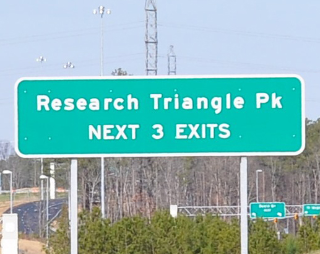The increasing importance of cities as vital hubs of the global economy have helped push universities into a substantial role in boosting a region’s economic activity. Universities provide access to knowledge networks, improve the local economic environment, and deliver knowledge and training to students and workers.

In a case study of the University of Twente’s role in supporting a formerly industrial economy, Benneworth and Hospers (2007) document how a university can create enthusiasm that supports the development of regional innovation.
The University of Twente provided direct support for regional initiatives built on the institution’s teaching, research, and service activities that then spread to involve other local actors. Ultimately, the university developed a regional mission and networks that built capacity for innovation and economic growth (Benneworth & Hospers, 2007).
While this research demonstrates the ability of universities to play a networking role in a particular context, further scholarship can consider additional contexts and conditions as well as measure the ability of universities to influence long-term city growth.
Huggins and Johnston (2009) conclude that universities are influenced by the competitiveness of the city or region in which they are located.
Competitive regions are those with economies that can attract and maintain firms with increasing market growth while also sustaining a high standard of living for residents. Competitiveness is defined by economic output per capita, employment rates, and density of knowledge-intensive firms (Huggins & Johnston, 2009).
Less competitive regions are institutionally weak, relying heavily on small or medium-sized businesses with a low growth history (Huggins & Johnston, 2009). In competitive regions, universities are usually highly productive, as measured by the value added by the institution as a percentage of the total value added across the region.
Higher education institutions in highly competitive regions possess greater wealth generating capacity than those in less competitive regions. One reason may be that institutions in more competitive regions have access to other kinds of organizations involved in facilitating innovation.
Higher levels of productivity are not simply a result of institutional capability, but also of access to ideas, people, and resources at neighboring organizations.
Doutriaux (2003) submits that higher education institutions that co-exist in city-regions with government laboratories and industry are commonly catalysts of innovation as opposed to drivers. In addition, Doutriaux documented the presence of a large research university in each of the 11 high-tech knowledge clusters in Canada.
Yet, higher education institutions are not the sole determinants of regional growth and innovation.
Knowledge Networks Supporting University-City Development
Higher education institutions contribute to the base of knowledge, ideas, and resources which are transported between different organizations and considered necessary reciprocal ingredients for economic benefit.
For instance, the development of new technology-based firms provides a component of the diverse economy needed for 21st century city-regions (Dahlstrand, 2007). This type of economic growth is most commonly seen in areas with research universities, knowledge industries, and existing firms, suggesting that the advantages to this development of economic networks with higher education institutions.
Research parks and innovation districts offer large-scale, geographic evidence of the networks between multiple local and regional partners. By promoting geographic proximity, these models create knowledge networks to encourage a culture of innovation and entrepreneurship (Luger & Goldstein, 1991).
Research Parks
University-based research parks are directly situated on a university’s campus.
Link and Scott (2007) contend that the location helps the park to benefit from the university’s research and knowledge base and also seeks to develop knowledge in concert with the university and park tenants.
Research parks have a lengthy history; the first research parks were created in the 1950s, and since the 1970s, have been growing at an exponential rate (Luger & Goldstein, 1991).
As defined by Luger and Goldstein, research parks are “organizational entities that sell or lease spatially contingent land and/or buildings to businesses or other organizations whose principal activities are basic or applied research or the development of new products” (1991, p. 5).
This definition excludes such areas as Route 128 in Massachusetts, since there is not an organizational entity overseeing the corridor. A more encompassing notion of research parks reflects not only formally organized spaces for collaboration and innovation, but also areas where various organizations congregate and interact with each other without a formal designation.
In informal corridors, the university presence is frequently less prescribed, but can be seen through such entities as spin-off and start-up companies (Bercovitz & Feldman, 2006; Link & Scott, 2007).
Innovation Districts
In a 2014 report, the Brookings Institution profiled the growth of “innovation districts,” defined as geographic areas where anchor institutions and businesses group around and link with start-ups and business accelerators (Katz & Wagner, 2014). These districts reflect the characteristics of robust knowledge networks.
Innovation districts are commonly small in physical size, easily accessible by public transportation, and home to a mix of retail, business, and residential spaces.
With a goal towards open innovation, companies that thrive on new knowledge operate in close proximity to knowledge-rich organizations such as research universities.
Innovation districts can be found in such urban cities as Atlanta, St. Louis, and San Diego and are supported by key anchor institutions (Webber & Karlstrom, 2009).
Several characteristics differentiate innovation districts from research parks including a location in a city’s existing infrastructure with the goal of fostering physical proximity and the opportunity for residents to live within the district itself.
The Brookings Institution identifies three models for innovation districts: anchor plus, where mixed-use development is organized around anchor institutions; re-imagined urban areas, where existing industrial space is converted and anchor companies consolidate; and the urbanized science park, where formerly isolated areas of innovation are urbanized by adding mixed-use activities.
Across the different models, anchor institutions play a consistent role as a driver of innovation.
This post is excerpted from my chapter, Universities as Anchor Institutions: Economic and Social Potential for Urban Development.

